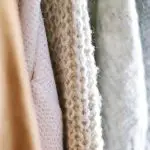Hey there! Dealing with slime on your fabric can feel like trying to untangle a stubborn knot. But fear not, because we've got you covered with 5 easy ways to remove slime from fabric.
Whether it's a gooey mess on your favorite shirt or a sticky situation on your couch, these methods will help you tackle the problem with ease.
From using the freezing method to employing a vinegar solution, you'll learn how to effortlessly banish slime from any fabric surface.
So, grab your supplies and get ready to become a master at slime removal – you've got this!
Key Takeaways
- The freezing method can be used to harden the slime, making it easier to remove from fabric.
- A vinegar solution can be effective in penetrating and breaking down the slime stain.
- Dish soap and water can help remove slime stains by gently scrubbing the area.
- Goo Gone and rubbing alcohol can be alternative options for removing slime stains, but should be tested on a small area first and used with caution.
Freezing Method
If you have a fabric stained with slime, you can use the freezing method to remove it effectively. This cold treatment is a great way to tackle the gooey mess without damaging the fabric.
First, gently scrape off any excess slime using a blunt knife or spoon. Then, place the fabric in a sealable plastic bag, ensuring the stained area is facing up. Pop it in the freezer for a few hours, allowing the slime to harden. Freezing the slime solidifies it, making it easier to remove.
Once frozen, carefully remove the fabric from the freezer and the bag. Use a butter knife or your fingers to chip away at the hardened slime. Be gentle to avoid damaging the fabric.
After removing as much slime as possible, pretreat the area with a fabric-safe stain remover before washing it as usual. This method not only effectively removes the slime but also protects the fabric from potential damage that could occur with more abrasive cleaning methods.
Vinegar Solution
Regularly apply a vinegar solution to the stained fabric to effectively break down and lift the slime. Vinegar is a fabric-friendly alternative that works wonders in removing slime stains. Its acidic nature helps to dissolve the slime, making it easier to lift from the fabric.
To create the vinegar solution, mix equal parts of white vinegar and water in a spray bottle. Lightly spray the solution onto the affected area and let it sit for a few minutes to penetrate the slime. Gently blot the area with a clean cloth, working from the outside towards the center of the stain to prevent spreading. Repeat the process as needed until the slime is completely removed.
In addition to removing slime, regularly applying a vinegar solution to fabric can also help in preventing slime stains. By treating the fabric with the solution before potential exposure to slime, you create a protective barrier that makes it more difficult for the slime to adhere to the fibers. This proactive approach can be particularly useful for fabrics that are more prone to staining, such as upholstery and carpets.
Dish Soap and Water
You can start by mixing dish soap with water to create a solution for removing slime from fabric. This gentle yet effective method can help pre-treat stains before tossing the fabric into the washing machine. Here's how to use dish soap and water to remove slime from fabric:
- Create the Solution: Mix a few drops of dish soap with warm water in a bowl or bucket. Stir the solution gently until the soap is fully dissolved.
- Pre-treat Stains: Apply the dish soap and water solution directly to the affected area. Use a clean cloth to dab the solution onto the slime stain, allowing it to penetrate the fabric fibers.
- Gentle Scrubbing: After pre-treating the stain, use a soft-bristled brush or a clean, damp cloth to gently scrub the area. Be careful not to scrub too vigorously, as this could damage the fabric.
Using dish soap and water is a simple yet powerful method for removing slime from fabric. This approach can effectively lift stains and slime residue before laundering, ensuring that your fabric comes out clean and slime-free.
Goo Gone
To remove slime from fabric using Goo Gone, apply a small amount of the product to the affected area and gently rub it in with a cloth. Goo Gone is effective in breaking down the sticky components of the slime, making it easier to remove from the fabric. One of the key benefits of Goo Gone is its ability to dissolve and eliminate tough substances like slime without damaging the fabric. It's important to note that Goo Gone should be used according to the product instructions and may require washing the fabric after application to ensure that all residues are completely removed.
While Goo Gone is a popular choice for removing slime from fabric, there are also alternative fabric cleaners that can be effective. Some people opt for using white vinegar, which can help to break down the slime and is a natural, non-toxic option. Additionally, rubbing alcohol can be used to dissolve the slime, but it's important to test it on a small, inconspicuous area of the fabric first to ensure that it doesn't cause any damage.
Ultimately, when using any fabric cleaner, it's essential to follow the instructions carefully and test on a small area before applying it to the entire affected area.
Rubbing Alcohol
How effectively can rubbing alcohol dissolve slime from fabric and what precautions should be taken?
Rubbing alcohol is a versatile stain remover and can be quite effective in dissolving slime from fabric. However, it's important to take some precautions to ensure the best results and to prevent damage to the fabric. Here's what you need to know:
- Spot Testing: Before applying rubbing alcohol to the stained area, it's crucial to perform a spot test on a small, inconspicuous part of the fabric to check for any adverse reactions.
- Ventilation: When using rubbing alcohol, make sure the area is well-ventilated to avoid inhaling the fumes.
- Gentle Blotting: When applying rubbing alcohol to the slime stain, use a gentle blotting motion with a clean cloth to avoid spreading the slime or damaging the fabric fibers.
When using rubbing alcohol for stain removal, it's essential to approach the process with care and attention to fabric care guidelines. By following these precautions, you can effectively tackle slime stains on fabric while keeping the fabric in good condition.
Frequently Asked Questions
Can I Use the Freezing Method on Delicate Fabrics Like Silk or Wool?
You can use the freezing method on delicate fabrics like silk or wool to remove slime. It's effective and gentle, ensuring silk care and wool preservation. Just be sure to follow the proper steps for best results.
Will the Vinegar Solution Leave a Strong Smell on the Fabric After Use?
After using the vinegar solution to remove slime from fabric, the odor shouldn't linger. It's effective for odor removal. When considering the freezing method, ensure it's gentle enough for delicate fabrics like silk or wool.
Is Dish Soap and Water Safe to Use on Colored or Patterned Fabrics?
When removing a stain from delicate fabrics, it's important to consider fabric care and color protection. Using a gentle dish soap and water solution is safe for colored or patterned fabrics, as it helps lift stains without causing damage.
Will Goo Gone Leave a Greasy Residue on the Fabric?
You can remove goo gone residue from fabric by using fabric-friendly solvents like rubbing alcohol or white vinegar. Simply dab the solvent onto the residue, then gently blot and wash the fabric as usual.
Can Rubbing Alcohol Cause Discoloration or Damage to Certain Types of Fabric?
Rubbing alcohol can cause discoloration or damage to certain types of fabric, so be cautious. For delicate fabrics, try the freezing method instead. It's a safer option to remove slime without risking harm to your fabrics.
- Innovations in Moisture-Wicking Textiles - July 18, 2024
- Engineering Fabrics for Optimal Performance - July 18, 2024
- The Science of Breathability in Fabrics - July 18, 2024








